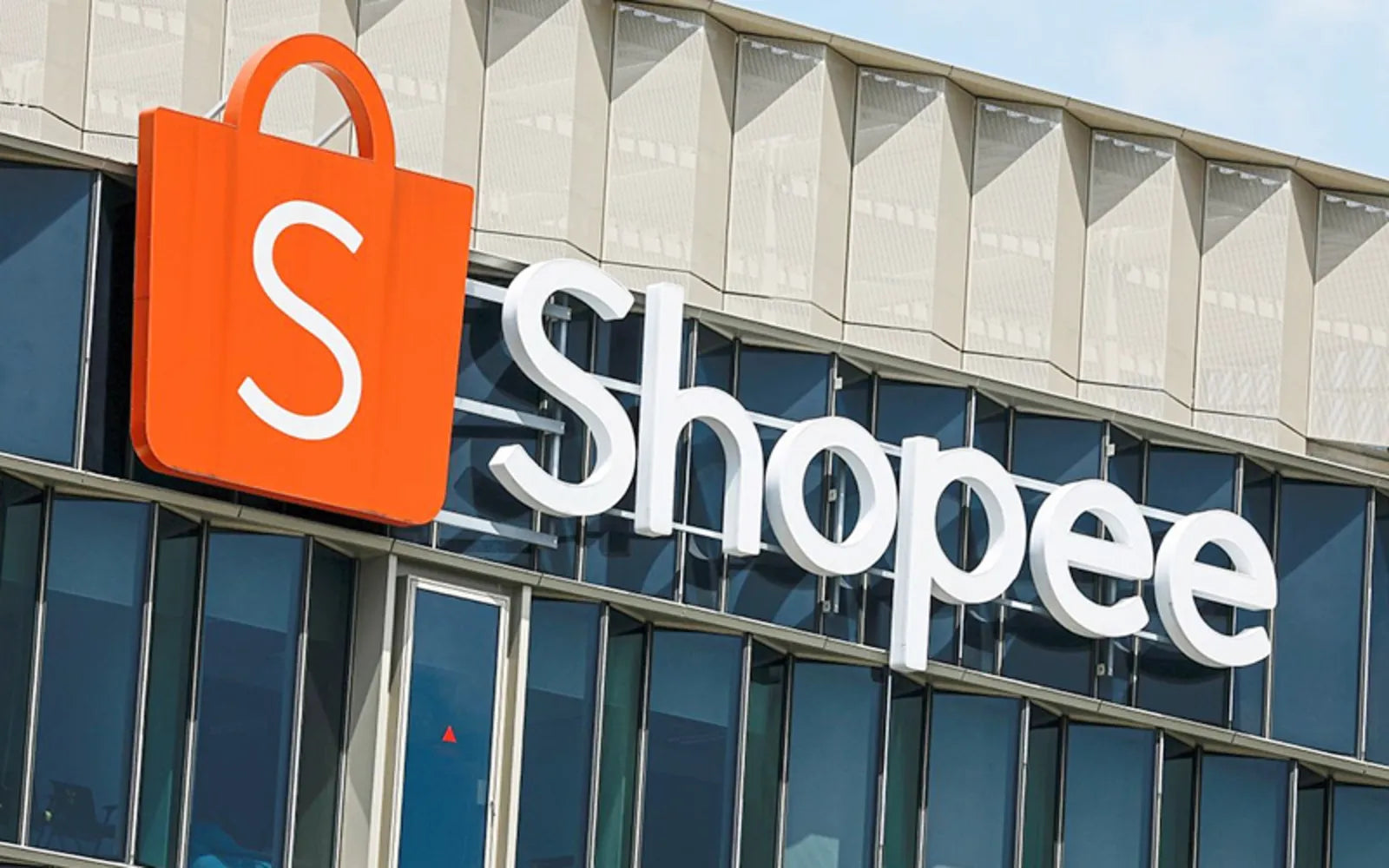
Shopee's Remarkable Resurgence: How Hyperlocal Deliveries Power Sea's 300% Stock Surge
Table of Contents
- Key Highlights:
- Introduction
- The Rise of Shopee: A Quick Overview
- The SPX Express Model: Redefining Last-Mile Logistics
- The Impact of COVID-19 on E-commerce Dynamics
- Shopee's Market Presence: Dominance and Strategy
- Community Integration: The Social Fabric of Southeast Asia
- The Future of Shopee: Challenges Ahead
Key Highlights:
- Shopee's innovative logistics strategy, driven by local homemakers, students, and retirees, has significantly contributed to Sea Ltd's stock rising over 300% since early 2024.
- The company's in-house delivery network, SPX Express, is transforming last-mile logistics in Southeast Asia, achieving high operational efficiency even amidst logistical challenges.
- Shopee has solidified its market dominance, capturing a 56% share of the region's e-commerce sector, markedly surpassing competitors like TikTok Shop and Lazada.
Introduction
In a fiercely competitive terrain dominated by giants like Amazon, TikTok Shop, and Shein, Shopee has emerged as a formidable player in the e-commerce landscape of Southeast Asia. Owned by Sea Ltd, the platform has seen an astounding 300% increase in its stock price since the beginning of 2024, fueled by an aggressive and innovative approach to logistics. Embedded within this strategy is SPX Express, a unique logistics operation that leverages community-centric delivery methods. This article delves into how Shopee's hyperlocal delivery model not only streamlines operations but also fosters a unique partnership with the communities it serves, reshaping the future of e-commerce in a region where traditional infrastructure often falls short.
The Rise of Shopee: A Quick Overview
Southeast Asia, with its sprawling population of approximately 675 million and a burgeoning online shopping ecosystem valued at $160 billion, has become a hotbed for e-commerce. Yet, it is within this vibrant marketplace that Shopee, an app easily recognizable for its bright orange branding, has carved a niche for itself. Sea Ltd's investment in Shopee has ushered in a transformative shift that combines technological innovation and community accessibility.
The resurgence of Shopee is not merely a result of market strategies but also stems from the significant investment in logistics, sparked by an urgent need to restructure its delivery processes during the height of the COVID-19 pandemic. As online shopping demand soared, Shopee's reliance on third-party carriers exposed vulnerabilities in its operational framework. The company's decisive pivot to build its logistics network has proven crucial in overcoming these challenges.
The SPX Express Model: Redefining Last-Mile Logistics
At the heart of Shopee's logistical success lies SPX Express, a thoughtfully constructed delivery network catering to the unique challenges of Southeast Asian geography. This strategy evolved from a need for reliability and efficiency in how products are delivered from warehouses to customers' doorsteps.
Harnessing Community Engagement
The SPX Express initiative has been empowering everyday citizens—homemakers, retirees, and students—to become drivers and distributors. This model takes advantage of resources within local communities, allowing for a quick turnover of deliveries. The use of practical tools, like the ubiquitous blue Ikea bags, has become a cultural symbol of Shopee's delivery network, showcasing the accessibility and integration within neighborhood infrastructures.
Hoirul Hafiidz Maksom, SPX Express's strategic force, recognized an opportunity while observing informal parcel reception by residents. By compensating local volunteers to handle deliveries, Shopee has created a dual impact: fostering a sense of community while ensuring efficient last-mile logistics. This strategy has dramatically reduced operational costs and bolstered delivery capabilities.
Operational Efficiency through Localized Solutions
The logistical architecture of Shopee's operations has evolved markedly over the years. Sorting centers across Singapore operate on a highly efficient model, processing up to 400,000 parcels per day. The result is an impressive delivery rate, where 90% of parcels reach customers the following day, enhancing customer satisfaction and loyalty.
The efficiency of SPX Express contrasts starkly with the challenges faced by third-party logistics providers. Historically, third-party carriers struggled with the complexities posed by the region's vast and diverse geography. By contrast, Shopee's logistics teams are well-equipped to navigate these challenges through localized operations, significantly increasing market share from virtually nothing in 2022 to about 25% by 2024.
The Impact of COVID-19 on E-commerce Dynamics
The pandemic acted as a catalyst for Shopee's meteoric rise and investment in logistics. As lockdown measures enforced a digital-first approach to shopping, demand surged, pushing existing delivery infrastructure to its limits. Sea recognized the pressing need to maintain service quality, which ultimately led to a strategic overhaul of its operations.
In 2021, Sea's CEO, Forrest Li, made the pivotal decision to allocate nearly $1 billion towards building a robust logistics network. This gamble was taken during a time when Sea's stock had plummeted by nearly 90% from previous highs, creating an atmosphere of skepticism among investors. Despite the daunting market conditions, Li's foresight to invest heavily in logistics proved to be a strategically beneficial move that has paid significant dividends in fostering brand loyalty.
Building Infrastructure During Tight Margins
The expansion of SPX Express comes with its challenges. The gig economy structure employed by Shopee places local delivery personnel under a high-effort, low-reward pay system, with standard payouts averaging S$0.50 per parcel. This compels many workers to hustle longer hours to earn sufficient incomes, highlighting the necessity of balancing demand with fair compensation.
Shopee's determination to maintain tight delivery costs while expanding its logistics capabilities has resulted in a competitive edge within the e-commerce market. Continuous innovation and responsiveness to community needs underlie its operational strategies, bringing the business closer to its customer base while enhancing efficiency.
Shopee's Market Presence: Dominance and Strategy
As of late 2024, Shopee captured 56% of Southeast Asia's e-commerce market share, substantially outpacing notable competitors such as TikTok Shop and Lazada. This success story unfolds against a backdrop of strategic partnerships, such as collaborating with Shopify to expand logistics services, demonstrating its commitment to growth beyond traditional confines.
Competing in a Crowded Marketplace
The e-commerce marketplace is rapidly evolving, characterized by aggressive competitors. TikTok Shop has emerged as a formidable player, backed by ByteDance's capital prowess, presenting a notable challenge to Shopee's market dominance. While TikTok Shop holds a 19% market share and is investing heavily in its logistics capabilities through partnerships with providers like J&T Express, Shopee's community-focused delivery model continues to create lasting connections with customers.
Ensuring Future Growth
Investors are optimistic about Sea's future, projecting record revenue for the next quarter, driven predominantly by e-commerce operations. Expectations suggest that Shopee's logistics might yield approximately $799 million in value-added services, contributing significantly to overall sales. Yet, to ensure sustained growth, Shopee must tackle competition head-on while exploring new market opportunities, both regionally and internationally.
Community Integration: The Social Fabric of Southeast Asia
Shopee's influence transcends the logistics model; it has become an integral part of the social fabric of many Southeast Asian communities. The humanistic approach of delivery personnel cultivating relationships with neighbors through personal engagement fosters a deep sense of belonging and community trust. This unique connection strengthens Shopee's brand perception as more than just a digital marketplace; it positions the company as a local staple in the lives of many families.
Success Stories from the Ground
Local residents are reaping the benefits of the SPX Express model. By establishing parcel collection points within their homes or nearby shops, individuals can ease the logistical burden for their neighbors. These arrangements not only facilitate a smoother delivery process but also serve as a hub for social interaction.
Peers often exchange words, assisting those collecting parcels in the process. One noteworthy example is Pearlyn Tan, a home-based delivery driver managing up to 80 parcels daily alongside her husband. This collaboration recreates a micro-economy built on community involvement, which not only aids finances but also strengthens communal ties.
The Future of Shopee: Challenges Ahead
Despite the optimistic outlook, Shopee and its SPX Express service face looming challenges, including operational bottlenecks within public spaces, regulatory scrutiny, and evolving consumer expectations. Complaints from residents about shared public spaces for sorting parcels and local government mandates requiring constant relocations symbolize the operational vulnerabilities Shopee grapples with daily.
In addition, the rapid expansion necessitates careful management of resources. To reach mass sustainability and expand its services beyond Shopee's platform, SPX must continue to innovate while addressing the fundamental concerns of its gig workforce.
Navigating a Competitive Marketplace
As the regional e-commerce environment increases in complexity, Shopee finds itself at a crossroads where it must identify paths for sustained competitive advantage. Continuous investment in logistics is essential, but equally important is adapting to shifting consumer demands while improving worker satisfaction.
FAQ
What is SPX Express?
SPX Express is Shopee's in-house logistics network that utilizes community members, like retirees and students, to deliver parcels efficiently across Southeast Asia.
How has Shopee's delivery model impacted its stock performance?
The innovative logistics approach has led to improved delivery speeds and customer satisfaction, resulting in a stock price increase of over 300% since early 2024.
What challenges does Shopee face in its logistics operations?
Shopee grapples with issues such as limited public spaces for sorting parcels, regulatory challenges, and the need for competitive pay structures for its delivery workers.
How does Shopee's market share compare to its competitors?
As of late 2024, Shopee holds a significant 56% of the Southeast Asian e-commerce market, with TikTok Shop and Lazada trailing at 19% and 15%, respectively.
What is the future outlook for Shopee?
The future of Shopee appears promising due to its resilient logistics network, community integration, and effective market strategies; however, navigating competition and regulatory landscapes will be crucial for continued success.
POWER your ecommerce with our weekly insights and updates!
Stay aligned on what's happening in the commerce world
Email Address
Handpicked for You

08 September 2025 / Blog
How to Avoid Greenwashing: Rules, Real-World Examples, and a Practical Playbook for Honest Environmental Claims
Read more
08 September 2025 / Blog
Klaviyo 2025: How its AI-Driven CRM Transforms Shopify Email Marketing and the Customer Experience
Read more
08 September 2025 / Blog


